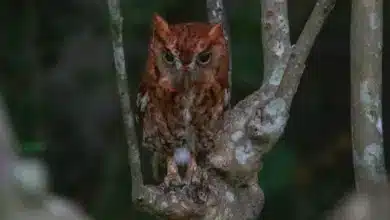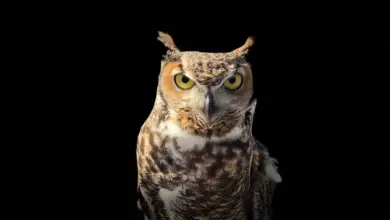Green-bellied Hummingbirds
The Green-bellied Hummingbird (Amazilia viridigaster) is a South American hummingbird species that occurs naturally in Brazil, Colombia, Guyana and Venezuela. Its range stretches from the eastern Andean foothills and lower slopes, from extreme western Venezuela (state of Táchira) to east-central Colombia,
It inhabits subtropical or tropical dry or moist lowland forests, moist montanes, and heavily degraded former forest.
Alternate (Global) Names
Czech: kolib?ík zelenob?ichý … Danish: Grønbuget Amazilie … Dutch: Groenbuikamazilia … German: Grünbauchamazilie … Finnish: Viinipyrstökolibri … French: Ariane à ventre vert … Italian: Amazilia ventreverde … Japanese: sumireoemerarudohachidori … Latin: Saucerottia viridigaster, Saucerottia viridigaster viridigaster … Norwegian: Grønnbukkolibri … Polish: Szmaragdzik zielonobrzuchy … Portuguese: Beija-flor-de-barriga-verde. Beija flor de barriga verde … Russian: ??????????? ???????? … Slovak: kolibrík zelenobruchý … Spanish: Amazilia Colimorada … Swedish: Gröbukad smaragd
Description
The Green-bellied Hummingbird averages 3.94 inches or 10 cm in length, from top of its head to the tip of its tail.
Hummingbird Resources
- Hummingbird Information
- Hummingbird Amazing Facts
- Attracting Hummingbirds to Your Garden
- Hummingbird Species
- Feeding Hummingbirds
Subspecies and Variations
Amazilia viridigaster viridigaster – This taxon has been split and is now considered a full species (sometimes considered a nominal subspecies)
ID: The rump is extensively buffy-brown to possibly olive-green. The upper tail feathers are violet. The tail is violet-blue to deep blue. Males have purplish central under tail feathers. Females have mostly dark grey under tail feathers with whitish fringes.
- Amazilia viridigaster iodura
ID: Looks like nominate form, except the tail is more coppery to purple, less violet tail.
Amazilia cupreicauda cupreicauda – full species (sometimes considered a subspecies)
ID: Foreparts are mostly green and the hindparts (includes rump and tail) more rufous in coloration (Hitty, 2003). Less of a copperish tinge on the back and rump than subspecies duidae or laireti. The back and rump golden-green to bronze or coppery, sometimes with purplish reflections. The flight feathers are rufous to chestnut, broadly edged coppery to bronze.
- Amazilia cupreicauda duidae
ID: The lower back and rump are more coppery-colored – turning purple towards the rump and upper tail feathers, especially in males. Females duller with more bronze-green in the tail.
- Amazilia cupreicauda laireti
ID: The plumage is generally darker green than in other forms. The upper tail feathers are golden-bronze to coppery. Rump and upper tail feathers darker than those of nominate race. Lacks the coppery back feathers of the other races.
- Amazilia cupreicauda duidae
ID: The lower back and rump are more coppery to purple coloration towards the rump and upper tail-coverts, particularly in males. Flight feathers are bronzy to purplish. Females have a duller plumage with more bronze-green in the tail.
- Amazilia cupreicauda pacaraimae
ID: Plumage a darker green color than that of the Amazilia cupreicauda (nominate form), and those of the subspecies duidae or laireti. Head and neck are bronze-green. Back and rump bronze green to copperish – a hint of purple to the rump. The back is more coppery. The tail is purplish to coppery-red. The females have a less copperish back and rump and her white markings on the chin are more conspicuous.
Nesting / Breeding
Hummingbirds are solitary in all aspects of life other than breeding; and the male’s only involvement in the reproductive process is the actual mating with the female. They neither live nor migrate in flocks; and there is no pair bond for this species. Males court females by flying in a u-shaped pattern in front of them. He will separate from the female immediately after copulation. One male may mate with several females. In all likelihood, the female will also mate with several males. The males do not participate in choosing the nest location, building the nest or raising the chicks.
The female is responsible for building the cup-shaped nest out of plant fibers woven together and green moss on the outside for camouflage in a protected location in a shrub, bush or tree about 2 – 7 m (6.5 – 23 feet) above the ground. She lines the nest with soft plant fibers, animal hair and feather down, and strengthens the structure with spider webbing and other sticky material, giving it an elastic quality to allow it to stretch to double its size as the chicks grow and need more room. The nest is typically found on a low, thin horizontal branch.
The average clutch consists of two white eggs, which she incubates alone, while the male defends his territory and the flowers he feeds on. The young are born blind, immobile and without any down.
The female alone protects and feeds the chicks with regurgitated food (mostly partially-digested insects since nectar is an insufficient source of protein for the growing chicks). The female pushes the food down the chicks’ throats with her long bill directly into their stomachs.
As is the case with other hummingbird species, the chicks are brooded only the first week or two, and left alone even on cooler nights after about 12 days – probably due to the small nest size. The chicks leave the nest when they are about 20 days old.
Diet / Feeding
The Green-bellied Hummingbird primarily feed on nectar taken from a variety of brightly colored, scented small flowers of trees (Inga, Pithecellobium, Tabebuia, Genipa), shrubs (Hamelia, Stachytarpheta), epiphytes and herbs (Lobelia). They favor flowers with the highest sugar content (often red-colored and tubular-shaped) and seek out, and aggressively protect, those areas containing flowers with high energy nectar.They use their long, extendible, straw-like tongues to retrieve the nectar while hovering with their tails cocked upward as they are licking at the nectar up to 13 times per second. Sometimes they may be seen hanging on the flower while feeding.
Many native and cultivated plants on whose flowers these birds feed heavily rely on them for pollination. The mostly tubular-shaped flowers actually exclude most bees and butterflies from feeding on them and, subsequently, from pollinating the plants.
In winter, when flowering plants may not be readily available, they may visit local hummingbird feeders for some sugar water, or drink out of bird baths or water fountains where they will either hover and sip water as it runs over the edge; or they will perch on the edge and drink – like all the other birds; however, they only remain still for a short moment.
They also take some small spiders and insects – important sources of protein particularly needed during the breeding season to ensure the proper development of their young. Insects are often caught in flight (hawking); snatched off leaves or branches, or are taken from spider webs. A nesting female can capture up to 2,000 insects a day.
Males establish feeding territories, where they aggressively chase away other males as well as large insects – such as bumblebees and hawk moths – that want to feed in their territory. They use aerial flights and intimidating displays to defend their territories.



